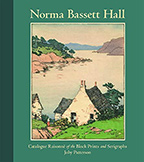Top ten reads of the year
2022 was a productive year of reading at Old Books by Dead Guys with 112 blog posts over the past twelve months. Listed below are my ten favorite reads of the year, arranged chronologically by date of publication. (None of them were actually published in 2022. This is Old Books by Dead Guys, after all.) Click on the titles below to read the full reviews.
The Crime of Sylvestre Bonnard by Anatole France (1881)
This debut novel by Nobel Prize winner Anatole France is narrated by an aged academic scholar who is shaken from the routine of his bachelor bookworm life when he indirectly reconnects with a lost love from his past. Through moments of lighthearted humor and a suspenseful plot, France crafts a novel that is heartwarming without being sappy, with characters the reader can really care about.
This debut novel by Nobel Prize winner Anatole France is narrated by an aged academic scholar who is shaken from the routine of his bachelor bookworm life when he indirectly reconnects with a lost love from his past. Through moments of lighthearted humor and a suspenseful plot, France crafts a novel that is heartwarming without being sappy, with characters the reader can really care about.
The Big Money by John Dos Passos (1936)
The third, final, and best novel in John Dos Passos’s U.S.A. Trilogy presents a kaleidoscopic panorama of American society in the 1920s. This includes a critical view of capitalism in an era in which America was rampant with income disparity, monopolistic trusts, and government corruption, yet somehow much of it feels uncomfortably familiar to the 21st century reader. Of course, you can’t get the full effect without reading all three novels in the trilogy, which I highly recommend.
The Grapes of Wrath by John Steinbeck (1939)
One of the great masterpieces of American literature that I finally got around to reading. The Grapes of Wrath tells the story of the Joads, Midwestern farmers rendered destitute by the Dust Bowl, who head for California in hopes of finding work to start a new life. Steinbeck’s writing hits the sweet spot between the naturalism of America’s regional realists like Frank Norris and Willa Cather and the modernism of Ernest Hemingway.
In Cold Blood by Truman Capote (1966)
In this landmark genre-defining work of creative nonfiction, Truman Capote examines the brutal 1959 killing of the Clutter family in the rural Western Kansas town of Holcomb and its effect on the local community. Through a mix of investigative journalism, biography (of both killers and victims), and literary license, Capote crafts a stunning work that reminds us of the indiscriminate arbitrarity of fate and the fleeting fragility of human life.
Valdez is Coming by Elmore Leonard (1970)
Elmore Leonard is best known as a writer of crime fiction. He got his start writing Westerns, however, and Valdez is Coming is an excellent one. Mexican-American Bob Valdez tries to do right by the widow of a man who was wrongfully shot, but he faces brutal opposition from a powerful landowner and his gang of henchmen. A classic Western revenge saga.
Life: A User’s Manual by Georges Perec (1978)
This remarkable novel, experimental in its form and structure, presents a minutely detailed portrait of a fictional ten-story apartment building in Paris and its scores of inhabitants. Perec comes up with incredibly inventive biographies for the dozens of characters, each more fascinating than the next. The 99 brief and varied chapters amount to a sort of modern Canterbury Tales of twentieth-century France.
This remarkable novel, experimental in its form and structure, presents a minutely detailed portrait of a fictional ten-story apartment building in Paris and its scores of inhabitants. Perec comes up with incredibly inventive biographies for the dozens of characters, each more fascinating than the next. The 99 brief and varied chapters amount to a sort of modern Canterbury Tales of twentieth-century France.
Constantine Samuel Rafinesque: A Voice in the American Wilderness by Leonard Warren (2004)
Back in the days of Thomas Jefferson, European emigré Constantine Rafinesque was one of America’s great naturalists. His scientific reputation and his valuable discoveries, however, were undermined by his sometimes shoddy scholarship and tendency toward quackery. Leonard Warren delivers a fascinating comprehensive biography of this brilliant but conflicted character.
Bobby Womack: My Story 1944–2014 by Bobby Womack and Robert Ashton (2014)
1960s and ’70s soul and rock hitmaker Bobby Womack relates the story of his own hard and disturbing life in the music business and also serves up a string of meaningful anecdotes on working with some of the biggest names in the Rock and Roll Hall of Fame. Maybe the best rock autobiography I’ve ever read.
Norma Bassett Hall: A Catalogue Raisonné of the Block Prints and Serigraphs by Joby Patterson (2014)
A lovely coffee-table volume loaded with beautiful reproductions of Norma Bassett Hall’s art, along with a well-researched biography. Hall (1889–1957), who was born in Oregon, educated in Portland, Chicago, and Scotland, and lived and worked in Kansas and New Mexico, is one of America’s unsung masters of the color woodblock print.
Lingo: Around Europe in Sixty Languages by Gaston Dorren (2015)
A lively look at the many languages of Europe, from the familiar national languages to lesser-known regional tongues like Breton, Sami, Manx, Gagauz, and Faroese. Gaston Dorren reveals many fascinating details of the unique and bizarre quirks of these languages, how they developed from their prehistoric progenitors, and how they have been influenced by culture and politics in ancient and modern times.
A lively look at the many languages of Europe, from the familiar national languages to lesser-known regional tongues like Breton, Sami, Manx, Gagauz, and Faroese. Gaston Dorren reveals many fascinating details of the unique and bizarre quirks of these languages, how they developed from their prehistoric progenitors, and how they have been influenced by culture and politics in ancient and modern times.




















